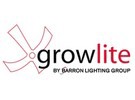The relevance of the environment when it comes to indoor cannabis cultivation is paramount, and being able to keep it under control is the key to a successful cycle. “Never underestimate the challenge of controlling the environmental conditions,” Mark Thomas with Growlite explains. “When moving from a small-scale to a large-scale grow, it’s not as easy as just scaling up. Understanding how much heat your lights are generating is one of the first issues to address. Whether using HID or LED, the heat generated by the lights must be calculated and properly addressed. Contrary to popular belief, LEDs do produce heat and that heat still has to be accounted for.”
A set of challenges
At the same time, heating is not the only challenge that growers encounter. “I have also seen a lack of airflow cause problems in large-scale grows. I recall one instance specifically. A grower had a huge warehouse and the plants on the exterior of the canopy were thriving but the plants in the middle had basically stopped growing. You could clearly see a difference as the plant canopy looked like it had caved in. There was not enough airflow getting to the plants in the middle and they were not receiving enough CO2. It's an easy fix but it gets overlooked more than you think.”
When it comes to lighting systems specifically, the major challenge is heating. “But also intensity and uniformity,” says Mark. “For instance, LED does produce less heat than HID in most cases, yet it still produces heat. The direction of the heat can be an issue as well. HID produces heat down toward the plants. LED produces heat up, away from the plants. Too much heat from HID or not enough heat from LED can be problematic.”
“Light intensity from HID requires the lights to typically be much further away from the plants than LED. The heat generated from the light sources also plays a role in mounting height as well, but if LEDs are too close they can still stress out the plants just like HID.
“Light uniformity is another aspect of plant lighting that is critical to get right. Placing the fixtures too close together can create multiple hot spots on the plant canopy. Spreading the fixtures too far apart can produce a rolling, uneven canopy. Lighting companies like Growlite provide professional lighting layouts that provide detailed information about fixture spacing and how that affects intensity and uniformity at the canopy. Lighting layouts are the best way to determine fixture amounts and fixture spacing to maximize intensity and uniformity.”
Flexible lighting
In order to support growers with their lights, Mark says that Growlite has been focusing on helping the growers in making the job easier. “We talk to growers, we want to find out what the things they are looking to improve are, and we make products that meet those needs. Our focus, especially since we evolved into the LED market, is to support growers with flexible lighting solutions to make everything easier. We always follow up after the installation, we go and do a light audit and make a variety of measurements, and help address some challenges that they might have encountered.”
Mark further recounts one project the company has worked on, of which he is especially proud. “We have a grower in Arizona that we worked with very closely to upgrade his lighting. It’s a hybrid facility, both a greenhouse and a warehouse. They had some issues with their greenhouse setup as they weren’t getting consistent yields. We were able to identify the lighting they were using was not providing enough intensity or uniformity throughout the facility. They were also vegging with two different light sources which were producing very different results within the same crop. We provided the grower with LED and HID options for their indoor veg space and greenhouse flowering facility. After going through multiple layouts showing both technologies for each space the grower felt like they made the right decision for their specific grow. Ultimately, they chose to run with our VARIUS LED Series for veg and our ARCHON DE in their greenhouse. We were able to help the grower produce faster veg growth and increase yield by 30%. Helping that grower identify the issue and provide a solution that they are happy with is a great feeling of accomplishment.”
Now that the industry is looking with increasing interest in LED light solutions, some might say that HID lamps will eventually be completely substituted. However, Mark doesn’t think so. “The only way that LED is going to dominate on other lighting solutions is when there is legislation banning HID,” he observes. “For instance, California is looking at that. At the same time, if that does happen, some growers might decide to go back to the illicit market where they can use HID. Such a regulation would prove to be particularly difficult for all current facilities using HID, which would have to make a huge investment to switch entirely to LEDs.” Therefore, before such a change will occur, a groundbreaking event such as new legislation needs to happen. “However, in a lot of facilities, we are selling both HID and LED,” Mark points out. “We see growers using LED only on the veg, some only on the flower, some on both, and others are going for a hybrid solution throughout the different stages. I think that, ultimately, the best results are achievable through a complex solution.”
For more information:
Growlite
7885 N Glen Harbor Blvd, Glendale, AZ 85307
(623) 282-9942
(888) 233-3948
growlite.com
